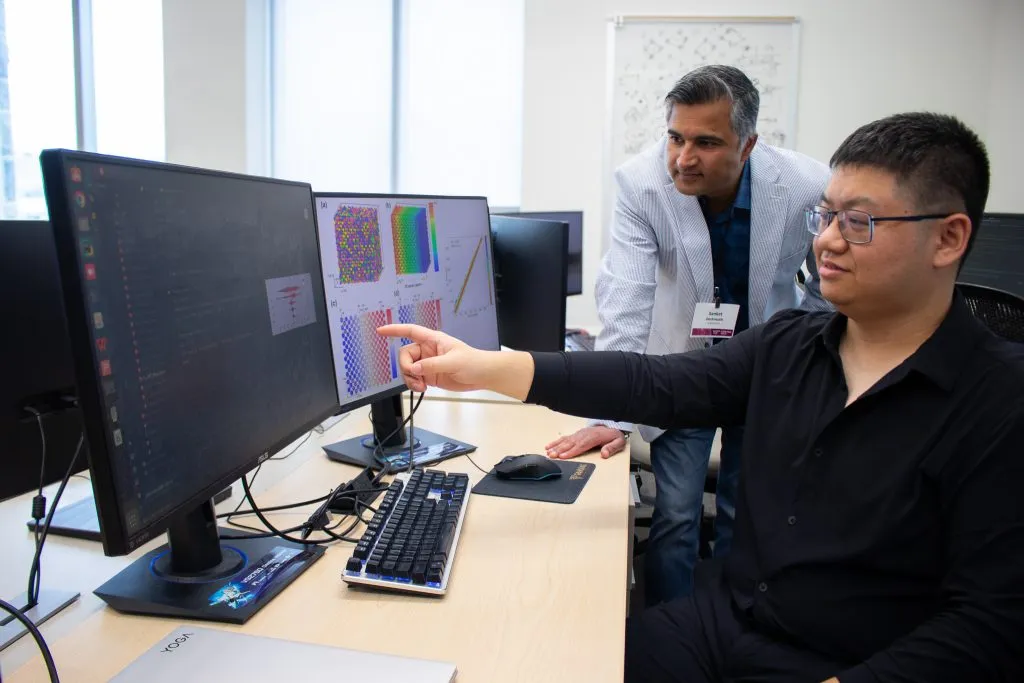In the ever-evolving landscape of materials science, a team of researchers led by Nicholas W G Smith from the Department of Physics at Virginia Tech has made a significant stride in the realm of multiferroics. Their work, published in the Journal of Physics Materials (JPhys Materials), explores the fascinating properties of BaTiO3–BiFeO3 (BTO–BFO) films and nanorod arrays, with potential implications for the energy sector and beyond.
The study delves into the enhanced magneto-electric coupling exhibited by BTO–BFO, a solid solution that has garnered attention for its promising applications in nonlinear optoelectronics and spintronics. “The enhanced magneto-electric coupling in BTO–BFO makes it a compelling candidate for future technologies,” Smith explains. “Our research aims to unravel the nuances of this material to harness its full potential.”
The researchers employed second harmonic emission (SHE) and ferromagnetic resonance (FMR) measurements to examine BTO–BFO nanorod arrays and films. The results were striking. The nanorod arrays, with heights ranging from 200 to 600 nanometers, demonstrated a significant enhancement in SHE compared to the films. This enhancement can be attributed to the high surface-to-volume ratio in the nanorod arrays, a factor that could be crucial for developing more efficient and compact devices.
The FMR measurements revealed low effective damping parameters of (4–8) × 10^−3 in both nanorods and film structures. This finding is particularly promising for spintronics, a field that leverages the spin of electrons to process information, potentially leading to more energy-efficient computing technologies.
The implications of this research extend to the energy sector, where the development of more efficient and compact devices could lead to significant energy savings. “The potential applications of BTO–BFO in nonlinear optoelectronics and spintronics could revolutionize the way we process and transmit information,” Smith notes. “This could have a profound impact on the energy efficiency of our devices, contributing to a more sustainable future.”
As the world grapples with the challenges of climate change and energy sustainability, the work of Smith and his team offers a glimmer of hope. Their research not only advances our understanding of multiferroics but also paves the way for innovative solutions that could shape the future of the energy sector.
In the words of Smith, “Our findings are a stepping stone towards the development of next-generation technologies that could redefine the boundaries of what is possible.” As we stand on the precipice of a new era in materials science, the work of Smith and his team serves as a testament to the power of scientific inquiry and its potential to transform our world.
The study, “Second harmonic generation and ferromagnetic resonance of BaTiO3–BiFeO3 films and nanorod arrays,” was published in the Journal of Physics Materials, a publication dedicated to the advancement of materials science and its applications.

